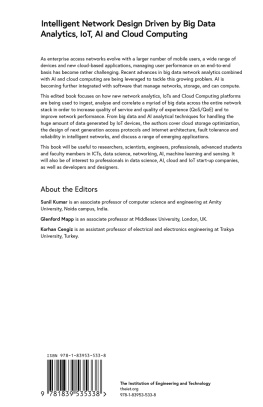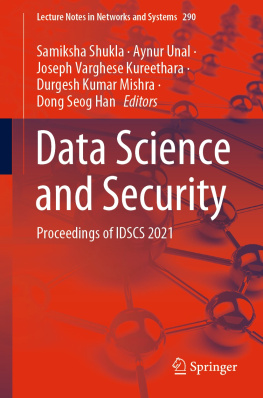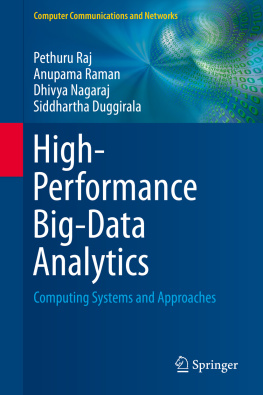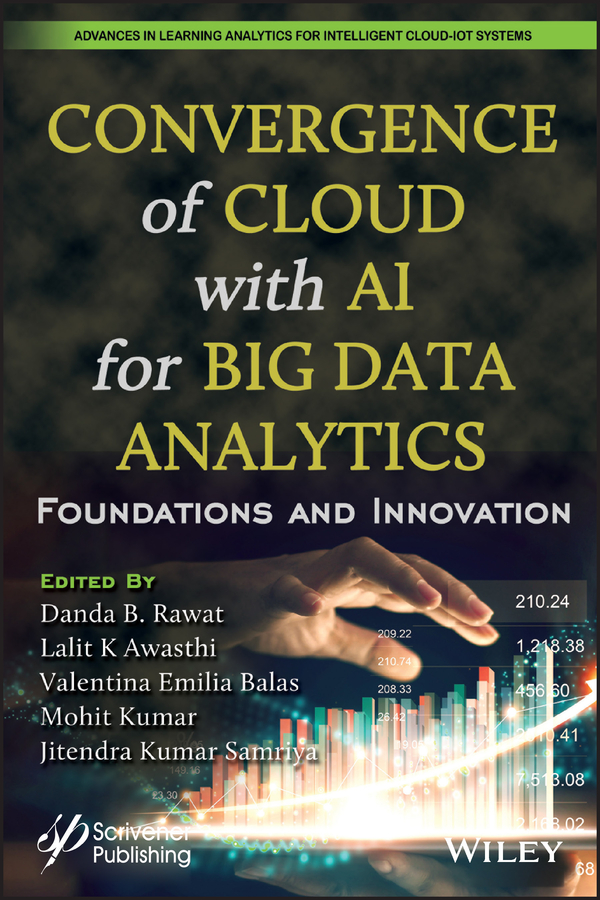Table of Contents
List of Tables
- Chapter 1
- Chapter 2
- Chapter 3
- c04
- Chapter 5
- Chapter 7
- Chapter 8
- Chapter 10
- Chapter 11
- Chapter 12
- Chapter 13
- Chapter 14
- Chapter 15
- Chapter 16
- Chapter 17
List of Illustrations
- Chapter 1
- Chapter 2
- Chapter 3
- c04
- Chapter 5
- Chapter 6
- Chapter 7
- Chapter 8
- Chapter 9
- Chapter 10
- Chapter 11
- Chapter 12
- Chapter 13
- Chapter 14
- Chapter 15
- Chapter 16
- Chapter 17
Guide
Pages
Scrivener Publishing
100 Cummings Center, Suite 541J
Beverly, MA 01915-6106
Advances in Learning Analytics for Intelligent Cloud-IoT Systems
Series Editors: Dr. Souvik Pal (souvikpal22@gmail.com) and Dr. Dac-Nhuong Le (nhuongld@hus.edu.vn)
Publishers at Scrivener
Martin Scrivener (martin@scrivenerpublishing.com)
Phillip Carmical (pcarmical@scrivenerpublishing.com)
Convergence of Cloud with AI for Big Data Analytics
Foundations and Innovation
Edited by
Danda B. Rawat
Lalit K Awasthi
Valentina Emilia Balas
Mohit Kumar
and
Jitendra Kumar Samriya

This edition first published 2023 by John Wiley & Sons, Inc., 111 River Street, Hoboken, NJ 07030, USA and Scrivener Publishing LLC, 100 Cummings Center, Suite 541J, Beverly, MA 01915, USA
2023 Scrivener Publishing LLC
For more information about Scrivener publications please visit www.scrivenerpublishing.com.
All rights reserved. No part of this publication may be reproduced, stored in a retrieval system, or transmitted, in any form or by any means, electronic, mechanical, photocopying, recording, or otherwise, except as permitted by law. Advice on how to obtain permission to reuse material from this title is available at http://www.wiley.com/go/permissions.
Wiley Global Headquarters
111 River Street, Hoboken, NJ 07030, USA
For details of our global editorial offices, customer services, and more information about Wiley products visit us at www.wiley.com.
Limit of Liability/Disclaimer of Warranty
While the publisher and authors have used their best efforts in preparing this work, they make no representations or warranties with respect to the accuracy or completeness of the contents of this work and specifically disclaim all warranties, including without limitation any implied warranties of merchant- ability or fitness for a particular purpose. No warranty may be created or extended by sales representatives, written sales materials, or promotional statements for this work. The fact that an organization, website, or product is referred to in this work as a citation and/or potential source of further information does not mean that the publisher and authors endorse the information or services the organization, website, or product may provide or recommendations it may make. This work is sold with the understanding that the publisher is not engaged in rendering professional services. The advice and strategies contained herein may not be suitable for your situation. You should consult with a specialist where appropriate. Neither the publisher nor authors shall be liable for any loss of profit or any other commercial damages, including but not limited to special, incidental, consequential, or other damages. Further, readers should be aware that websites listed in this work may have changed or disappeared between when this work was written and when it is read.
Library of Congress Cataloging-in-Publication Data
ISBN 978-1-119-90488-5
Cover image: Pixabay.Com
Cover design by Russell Richardson
Preface
This book was written to discuss the milestones in the development of three recent domains in computer science engineeringCloud Computing, Artificial Intelligence and Big Data Analyticsand to analyse the convergence of cloud computing with artificial intelligence for big data analytics. Despite the fact that all three domains work separately, they can be linked in interesting ways. However, even though AI and big data can be easily linked, because AI needs a huge amount of data to train the model, they still suffer from a data storage issue. This drawback can be addressed with the help of cloud computing, which makes it possible to provide on- demand services to the client in terms of computer resources, such as storage and computing power, without the need for user management. This book aims to provide the scope of research on the discussed technologies.
Structure of the Book
The 17 chapters of the book cover the intertwining concepts of three key levels that are of interest to the scientific community:
- Artificial Intelligence
- Big Data
- Cloud Computing
A chapter-wise breakdown of the contents of the book follows:
- discusses the integration of artificial intelligence, big data and cloud computing with the internet of things (IoT).
- discusses cloud computing and virtualization.
- presents a time and cost-effective multi-objective scheduling technique for cloud computing environment.
- discusses cloud-based architecture for effective surveillance and diagnosis of COVID-19.
- presents smart agriculture applications using cloud and the IoT.
- presents applications of federated learning in computing technologies.
- analyzes the application of edge computing in smart healthcare.
- discusses a smart agriculture application using Fog-IoT.
- presents a systematic study of the global impact of COVID-19 on the IoT.
- discusses efficient solar energy management using IoT-enabled Arduino-based MPPT techniques.
- presents an axiomatic analysis of pre-processing methodologies using machine learning in text mining from the perspective of social media in the IoT.
- presents an app-based agriculture information system for rural farmers in India.
- provides a systematic survey on AI-enabled cyber-physical systems in healthcare.
- discusses an artificial neural network (ANN) aware methanol detection approach with CuO-doped SnO2 in gas sensor.
- describes how to detect heart arrhythmias using deep learning algorithms.
- presents an artificial intelligence approach for signature detection.
- compares various classification models using machine learning to predict the price range of mobile phones.
Acknowledgment
Writing this book has been a rewarding experience, which was enhanced by the tremendous effort of a team of very dedicated contributors. We would like to thank the authors for their respective chapters and also express our thanks to the list of editors who provided suggestions to improve content delivery. All feedback was considered, and there is no doubt that some of the content was influenced by their suggestions. We especially would like to thank the publisher, who believed in the content and provided a platform to reach the intended audience. Finally, we are thankful to our families for their continued support. Without them, the book would not have been possible.
The Editors
October 2022
Integration of Artificial Intelligence, Big Data, and Cloud Computing with Internet of Things











